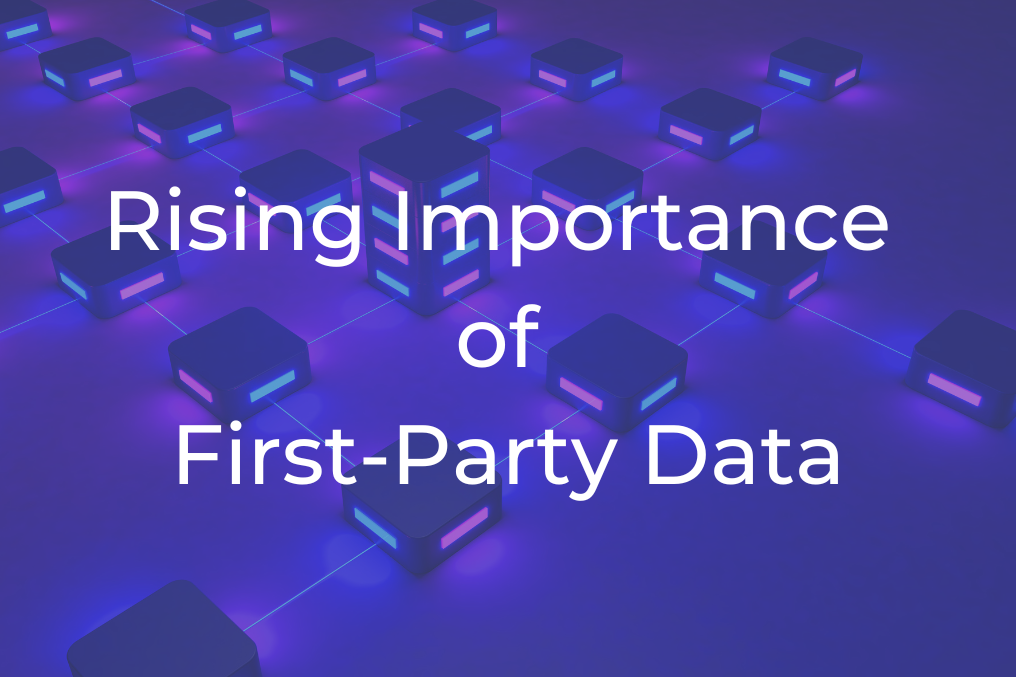
“We’ll help you boost performance, simplify processes, and drive growth with data solutions.”
Unleashing Business Insights with Data Warehousing and BI for Smarter Decision-Making
In today’s data-driven world, businesses are generating vast amounts of data from various sources such as customer interactions, transactions, social media, and IoT devices. However, raw data alone is insufficient to drive business success. The ability to transform this data into actionable insights is what sets successful businesses apart. This is where Data Warehousing and Business Intelligence (BI) come into play. By leveraging these technologies, companies can turn their data into valuable insights, enabling smarter, more informed decision-making.
Table of Contents
Toggle
In this blog, we will explore how data warehousing and BI empower businesses to unlock critical insights, how they improve decision-making processes, and the role of custom BI tools, such as DataActs, in creating tailored solutions for your unique business needs.
What is Data Warehousing?
A Data Warehouse is a centralized repository where data from multiple sources is stored and consolidated. It serves as the backbone for data analysis and reporting. Data in a warehouse is typically structured, cleaned, and optimized for querying and reporting, making it easier for business users to access and analyze.
Key Benefits of Data Warehousing:
- Centralized Data Management: Data warehousing centralizes data from different sources, ensuring that everyone in the organization works with the same information. Maintaining data consistency is essential for accurate reporting and analysis, ensuring reliable insights for business decisions.
- Enhanced Data Quality: By cleansing and transforming data before it enters the warehouse, businesses can ensure that the data is accurate, complete, and reliable.
- Improved Data Access: Data warehousing simplifies the process of accessing and querying large datasets, enabling faster and more efficient analysis.
- Scalability: As businesses expand, so does their data. Modern data warehouses are built to scale, efficiently handling growing data volumes while maintaining high performance and speed for seamless data analysis.
- Affordability: Data warehousing has become more accessible and cost-effective for small businesses due to cloud computing advancements. Cloud-based services like Amazon Redshift, Google BigQuery, and Snowflake offer flexible, pay-as-you-go models, eliminating the need for costly infrastructure and maintenance. These platforms provide scalability, allowing businesses to only pay for the storage and computing power they use.
What is Business Intelligence?
Business Intelligence (BI) encompasses the processes, technologies, and tools that organizations utilize to collect, analyze, and visualize data, enabling them to make data-driven business decisions and improve overall performance. BI tools help businesses monitor their performance, track KPIs, and identify trends or anomalies in real-time. These tools include features such as dashboards, reporting, data visualization, and advanced analytics.
While data warehousing provides the infrastructure, Business Intelligence tools are the engines that drive data-driven decision-making. BI encompasses a range of technologies and practices for the collection, integration, analysis, and presentation of business information.
Key Components of Business Intelligence:
- Data Mining: This involves exploring large datasets to discover patterns, correlations, and insights that can inform business strategies.
- Reporting: BI tools generate reports that present data in a clear and concise manner, helping stakeholders understand the state of the business.
- Dashboards: Dashboards provide real-time visual representations of key performance indicators (KPIs) and other critical metrics, making it easier to monitor business performance at a glance.
- Predictive Analytics: By leveraging historical data, BI tools can make predictions about future trends, helping businesses anticipate market changes and adjust their strategies accordingly.
- Ad-Hoc Querying: BI tools enable users to ask specific questions and get instant answers, empowering them to make quick, informed decisions.
How Data Warehousing and BI Work Together?
Data warehousing and Business Intelligence are complementary technologies that, when combined, provide a comprehensive solution for data management and analysis.
Data Warehousing Process:
- Data Extraction: Data is collected from various sources such as transactional databases, CRM systems, and external data feeds.
- Data Transformation: The extracted data is cleaned, formatted, and transformed into a consistent format suitable for analysis.
- Data Loading: The transformed data is then loaded into the data warehouse, where it is stored and organized for easy access.
- Data Access: BI tools connect to the data warehouse to retrieve data for analysis and reporting.
Business Intelligence Process:
- Data Integration: BI tools integrate data from the data warehouse with external sources, such as market data or social media feeds, to provide a comprehensive view of the business.
- Data Visualization: The analyzed data is presented in the form of reports, dashboards, and visualizations that are easy to understand and actionable.
- Data Analysis: Advanced analytical techniques, such as data mining and predictive analytics, are applied to the integrated data to uncover insights.
- Decision-Making: Stakeholders use the insights provided by BI tools to make informed decisions that drive business growth and efficiency.
The Importance of Data Warehousing and BI for Business Success
In the digital era, businesses must navigate complex environments where quick, informed decisions can make or break success.

Here’s how Data Warehousing and BI contribute to smarter decision-making:
1. Improved Data Quality and Consistency- Data warehousing ensures that data from different sources is standardized, cleansed, and consolidated. This process eliminates inconsistencies, inaccuracies, and redundancies, resulting in high-quality data that can be trusted. By feeding clean, consistent data into BI systems, businesses can generate accurate reports and insights, minimizing the risks associated with poor decision-making due to faulty data.
2. Centralized Data Access- With a data warehouse, businesses have a centralized repository for all their data, which can be accessed from a single location. This reduces the complexity of managing multiple data sources and eliminates the need for manual data integration. A centralized data warehouse allows users from different departments to access the same dataset, promoting collaboration and ensuring that everyone is working with the same, up-to-date information.
3. Enhanced Decision-Making Capabilities- BI tools enable businesses to analyze historical and real-time data to make well-informed decisions. By using data visualization techniques, such as charts, graphs, and interactive dashboards, decision-makers can quickly identify trends, patterns, and outliers. These insights empower businesses to make proactive decisions, whether it’s identifying new market opportunities, optimizing supply chain operations, or enhancing customer experiences.
4. Faster Reporting and Analysis- Traditionally, generating reports or performing data analysis could take days or even weeks. However, with data warehousing and modern BI tools, businesses can perform real-time analysis and generate reports in a matter of minutes. This speed and efficiency enable companies to respond quickly to market changes, customer demands, or emerging trends, giving them a competitive edge.
5. Predictive and Prescriptive Analytics- Beyond historical analysis, advanced BI tools integrate predictive analytics and prescriptive analytics, which use machine learning algorithms to forecast future outcomes and recommend actions based on the data. Predictive analytics allows businesses to anticipate trends, while prescriptive analytics suggests the best course of action, helping businesses stay ahead of the competition.
Key Stats to Highlight
- McKinsey– Data-driven organizations are 23 times more likely to acquire customers and 19 times more likely to achieve higher profitability.
- PwC– Companies that embrace data-driven strategies outperform their competitors by 6% in profitability and see a 5% boost in productivity.
- Ernst & Young– A significant 81% of companies believe that data should play a central role in decision-making. However, many businesses are still utilizing data inefficiently, leading to lost opportunities and reduced value.
How DataActs Helps to Unlock Business Insights?
At DataActs, we understand the challenges that businesses face in managing and analyzing large volumes of data. Our custom BI tool is designed to help companies unlock the full potential of their data by providing a seamless integration of data warehousing, advanced BI, and powerful analytics.

Here’s how we support your data-driven decision-making journey:
1. Customizable Dashboards and Reporting- DataActs allows you to create fully customizable dashboards that align with your key performance indicators (KPIs) and business objectives. Our intuitive reporting features make it easy to generate insights tailored to your specific industry or operational goals.
2. Seamless Data Integration- DataActs integrates seamlessly with your existing data warehouse and business systems, including CRM platforms, marketing automation tools, and financial software. By consolidating data from various sources into a single platform, you get a comprehensive view of your business performance without the hassle of manual data gathering and cleaning.
3. Real-Time Data Analysis- Our BI tool supports real-time data analysis, enabling you to monitor ongoing operations and quickly respond to changes. This feature is particularly beneficial in fast-paced industries like retail, logistics, and e-commerce, where real-time insights can drive significant improvements in customer experience and operational efficiency.
4. Predictive Analytics for Future Planning- DataActs incorporates advanced predictive analytics, allowing you to forecast future trends and make strategic decisions based on anticipated outcomes. By analyzing historical data and current market trends, our tool helps you identify potential challenges and opportunities, ensuring that your business stays ahead of the curve.
5. Data-Driven Decision-Making- With DataActs, businesses can make decisions backed by data. Whether you’re assessing marketing campaigns, evaluating product performance, or monitoring financial health, our tool provides you with actionable insights that empower you to make informed, data-driven decisions.
Conclusion
In an increasingly competitive and fast-paced business environment, the ability to make data-driven decisions is critical to success. By investing in a custom BI solution, you can harness the full potential of your data, enabling smarter, faster, and more informed decision-making across your organization.
As said by Peter Sondergaard, Senior Vice President and Global Head of Research at Gartner, Inc.
“Information is the oil of the 21st century, and analytics is the combustion engine.”
So let DataActs help you unlock actionable insights and drive your business forward with smarter, data-driven decisions.
Ranjan Kashyap
“We’ll help you boost performance, simplify processes, and drive growth with data solutions.”


From Cookies to Customer Loyalty: The Rising Importance of First Party Data

Elevate Your Shopify Analytics: Implementing a Data Layer with GTM

GA4 and Server-Side Tagging: The Next Big Thing in Data Analytics in 2025 🚀

Cloud Data Warehouse Showdown: BigQuery, AWS Redshift, and Azure Synapse

Optimizing ETL/ELT Processes for Enhanced Data Quality: Strategies for Businesses
Explore related posts.

Understanding Facebook Conversions API: Why Use It and How to Integrate

From Cookies to Customer Loyalty: The Rising Importance of First Party Data

Elevate Your Shopify Analytics: Implementing a Data Layer with GTM

GA4 and Server-Side Tagging: The Next Big Thing in Data Analytics in 2025 🚀

Cloud Data Warehouse Showdown: BigQuery, AWS Redshift, and Azure Synapse

